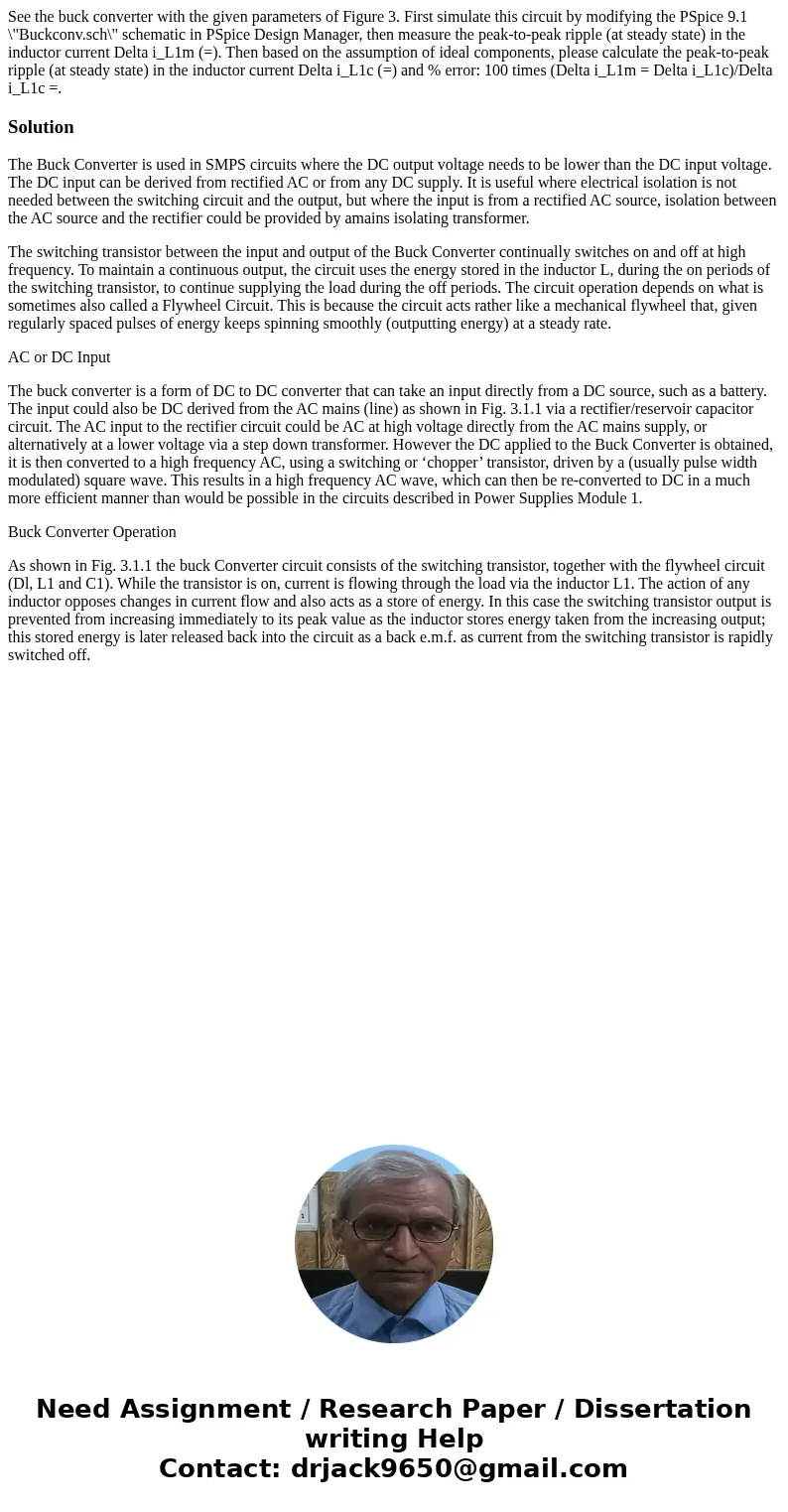See the buck converter with the given parameters of Figure 3
Solution
The Buck Converter is used in SMPS circuits where the DC output voltage needs to be lower than the DC input voltage. The DC input can be derived from rectified AC or from any DC supply. It is useful where electrical isolation is not needed between the switching circuit and the output, but where the input is from a rectified AC source, isolation between the AC source and the rectifier could be provided by amains isolating transformer.
The switching transistor between the input and output of the Buck Converter continually switches on and off at high frequency. To maintain a continuous output, the circuit uses the energy stored in the inductor L, during the on periods of the switching transistor, to continue supplying the load during the off periods. The circuit operation depends on what is sometimes also called a Flywheel Circuit. This is because the circuit acts rather like a mechanical flywheel that, given regularly spaced pulses of energy keeps spinning smoothly (outputting energy) at a steady rate.
AC or DC Input
The buck converter is a form of DC to DC converter that can take an input directly from a DC source, such as a battery. The input could also be DC derived from the AC mains (line) as shown in Fig. 3.1.1 via a rectifier/reservoir capacitor circuit. The AC input to the rectifier circuit could be AC at high voltage directly from the AC mains supply, or alternatively at a lower voltage via a step down transformer. However the DC applied to the Buck Converter is obtained, it is then converted to a high frequency AC, using a switching or ‘chopper’ transistor, driven by a (usually pulse width modulated) square wave. This results in a high frequency AC wave, which can then be re-converted to DC in a much more efficient manner than would be possible in the circuits described in Power Supplies Module 1.
Buck Converter Operation
As shown in Fig. 3.1.1 the buck Converter circuit consists of the switching transistor, together with the flywheel circuit (Dl, L1 and C1). While the transistor is on, current is flowing through the load via the inductor L1. The action of any inductor opposes changes in current flow and also acts as a store of energy. In this case the switching transistor output is prevented from increasing immediately to its peak value as the inductor stores energy taken from the increasing output; this stored energy is later released back into the circuit as a back e.m.f. as current from the switching transistor is rapidly switched off.

 Homework Sourse
Homework Sourse